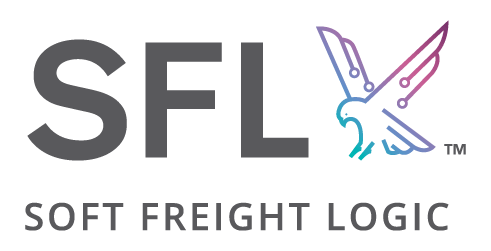Diversity and inclusion for supply chain success
Diversity and inclusion (D&I) have received a bad rap as corporate buzzwords. But genuinely inclusive workplaces drive companies to success. Savvy business leaders understand this. In a survey by Deloitte, 98% of CEOs said Diversity, equity, inclusion, and belonging (DEIB) are a priority to them when running the company.
Logistics and supply chain businesses are also improving their attention to DEIB. According to Gartner, logistics companies are rapidly realising the importance as well. The number of companies with no focus on these metrics and dimensions has decreased from 21% to 11%, just in the last year.
People tend to work better and harder when they feel they are welcomed. It also helps attract new talent and retain existing talent in a time of labour shortages and resignations. The entrance of Gen Z into the workforce adds another reason why logistics companies need to be concerned about D & I. It is a crucial factor in employment choices for the new generation of workers.
What are Diversity and Inclusion?
The idea of making workplaces inclusive and diverse goes back decades. The ethos and practices go by many names: D&I, EDI, I&D, DEIB (diversity, equity, inclusion, and belonging), and JEDI (Justice, Equity, Diversity & Inclusion). Some key terms used include:
- Diversity: The range of differences among people. This includes things such as age, gender, socioeconomic background, and ethnicity. A diverse organisation or a team would be made of people encompassing a range of these differences.
- Equity: Recognising that people have advantages and disadvantages due to their differences and that in turn creates different starting points. Equity measures try to address these imbalances and mitigate them.
- Inclusion: Making people feel like valued members of a group and giving everyone the same rights and opportunities. The principle of inclusivity should affect policies, processes, products, and physical spaces among others.
- Belonging: A sense of acceptance and support one gets as a member of a particular group.
There is plenty of evidence to say diversity and inclusion positively affect the bottom line. Companies in the top quartile for racial and ethnic diversity are 35% more likely to have financial returns above the industry median. Companies with women leaders generate up to 50% higher profits.
In this article, we will focus on how women leaders can drive digital transformation in logistics companies. We will discuss the challenges faced by women in logistics, examples of D & I transforming logistics companies, and best practices to foster D & I in your company.
Women employees and leadership in logistics
Women in all industries and sectors unfortunately still face many challenges due to their gender. These include
- Lack of representation: Women make up only 31% of senior management worldwide and the global labour participation of women is 47% (compared to 72% of men).
- The glass ceiling and unconscious bias: Conscious discrimination and unconscious biases at play stop women from career advancement, finding mentors, and obtaining C-suite positions.
- Unequal pay: In the United States, women earn 84 cents for every dollar a man earns – even if they work the same job and work hours. This gender pay gap has remained steady for the last 15 years.
- Sexual or gender-based harassment: According to McKinsey, 35% of all women in corporate America and 55% of women in senior management positions have experienced some form of sexual harassment at work.
Logistics has traditionally had a reputation for being a profession for men. Even today, roles that involve machine operating, warehouses, and storage are still dominated by men. Automation and robotics are now allowing more women to take part in these roles now.
However, women have always been working in the industry. There are historic examples of accomplished women in logistics, some over a century ago.
- Sarah Clarke Kidder: The first woman in the world to run a railroad company. When she took over, Nevada County Narrow Gauge Railroad (NCNGRR) was in over $ 200k in debt (in 1901 money). By 1903, the company had its most profitable year ever in its history.
- Lily Elizabeth Drennan: The first woman to ever hold a commercial driving license in Texas, back in 1929. She had an accident-free driving record for 24 years and went on to co-found a trucking company.
- Edwina Justus: The first ever black woman to become a locomotive engineer in the US. She achieved this in 1976 while facing much discrimination due to her gender and race.
“If you have an idea or a better way to do something that will help the company, speak up. Don’t back off because you are a woman. In the right company with the right leadership, they will value you even more as they come to trust and depend on you.”
Dana Randazzo
Covid-19 drastically changed the way logistics and supply chains worked. Recent information reveals that the pandemic has inadvertently improved women’s representation in the industry.
According to Gartner, women comprises 41% of the workforce in logistics in 2021. This number is up 2% percent from 2020. Women in leadership roles have also increased their representation in the past year. The only exception is the most senior roles like Vice Presidents, Chief Supply Chain Officers, and Chief Procurement Officers. According to the researchers, the acute shortage of labour allowed women in logistics to stand their ground and showcase their talent.
Remote and hybrid work also allows women to deal with unscious biases better. Women are constantly underrated by their managers, reducing opportunity to move up the ladder. The lack of women leaders in c-suites and senior management reinforced the biases of management, creating a vicious cycle.
Working remotely has put the onus more on results and highlighted the importance of soft skills. This works in advantage of female leaders as there is more concrete proof of their capability.

The gender-based wage gap is becoming progressively narrower in the industry, at least for younger workers. According to the Association for Supply Chain Management (ASCM) 2022 salary survey, women under 40 in the industry now earn more than their male peers.
However, over 40% women still earn less than men – in some cases less than 25% of the median salary paid to men in the same age bracket. There’s much to be done to make the industry more equitable for women.
How women leaders can drive digital transformation
According to research published in Harvard Business Review, women outscore men on almost all leadership qualities. They’re also perceived as just as effective by those around them. This is evidence that women leaders are just as capable as men, if not more, in driving digital transformation in logistics.

Dana Randazzo, Chief Operations Officer of Auto Hauler Exchange, shared her experience with how she handles digital transformation as a woman leader in logistics.
“Regardless of your gender, there are challenges with driving digital transformation. Some of these are due to the differences between the highly specialized technical language spoken by solution providers and the industry-specific language used in the logistics sector.
It’s important to patiently communicate as much as needed to get to an understanding of what will or won’t work for a company in the final automated platform.
Leading means maintaining constant communication with the technical team as they automate operations, answering questions, providing explanations, and testing each step as it rolls out.”
Dana Randazzo, Chief Operations Officer of Auto Hauler Exchange
Best practices for diversity and inclusion in your logistics company
At Soft Freight Logic, we aim to create an inclusive environment for everyone – employees, suppliers, and clients. Here are some best practices we use. Feel free to use these as inspiration or imitate them outright in your journey towards D & I.
- Regarding current employees: We strive for a culture where anyone can express themselves at work and ask for help when needed without being judged. We acknowledge our team’s personal career goals and upskill them on a regular basis.
- Using technology for inclusivity: Many companies use productivity tools to micromanage. But we have used them to restructure our ecosystem to support the needs of our employees and clients.
We review our productivity tools regularly to identify any employees exceeding their work hours. This allows the organisation to expand staff where necessary, reducing work stress and pressures.
We have also used the same tools to track hours spent on client tasks and identified how to streamline those. We used this information to create the CargoWise Consulting Calculator for current and prospective clients. They can can have instant pricing to their projects, clearly defined deliverable times, and breakdown of project tasks through this.
These tools assist with leadership as it caters for future development of the business in planning of projects, staff required and growth opportunities for staff to learn and up skill themselves.
- Regarding prospective employees: To increase diversity, we encourage applicants from all over the world to apply for our vacancies. Applicants are not discriminated against on the basis of age, demography, nationality, or gender. All new hires are given equal access and in-depth knowledge of our brand, our tools, and our strategy.
- Regarding women leaders: SFL has a large cohort of women in leadership positions. While the company was founded and is led by two men, the C-suite has always recognized the potential of women leaders. It is possible for leaders of any gender to be empathetic and reward talented employees with what they deserve.
- Overall communications strategy: We took the time to hone who our target audience (Supply Chain, Logistics, Freight Forwarders) is and what they require from all sectors and demographics. This allows SFL to better support their clients. This helps to focus on each clients individual needs to create a more inclusive environment.

Get started with digital transformation
A good first step to empowering the leaders in your company is to invest in good Enterprise Resource Planning (ERP) software. This helps eliminate busy work and automate manual and repetitive tasks. It will bring in digital transformation, a much-needed step to succeed in the future world of logistics.
This in turn would free up the valuable time of your corporate leadership to work on the important but not urgent – like creating a diverse, inclusive corporate culture.
Book a discovery call today to find out how SFL can help your company get started with the first steps of digital transformation.






